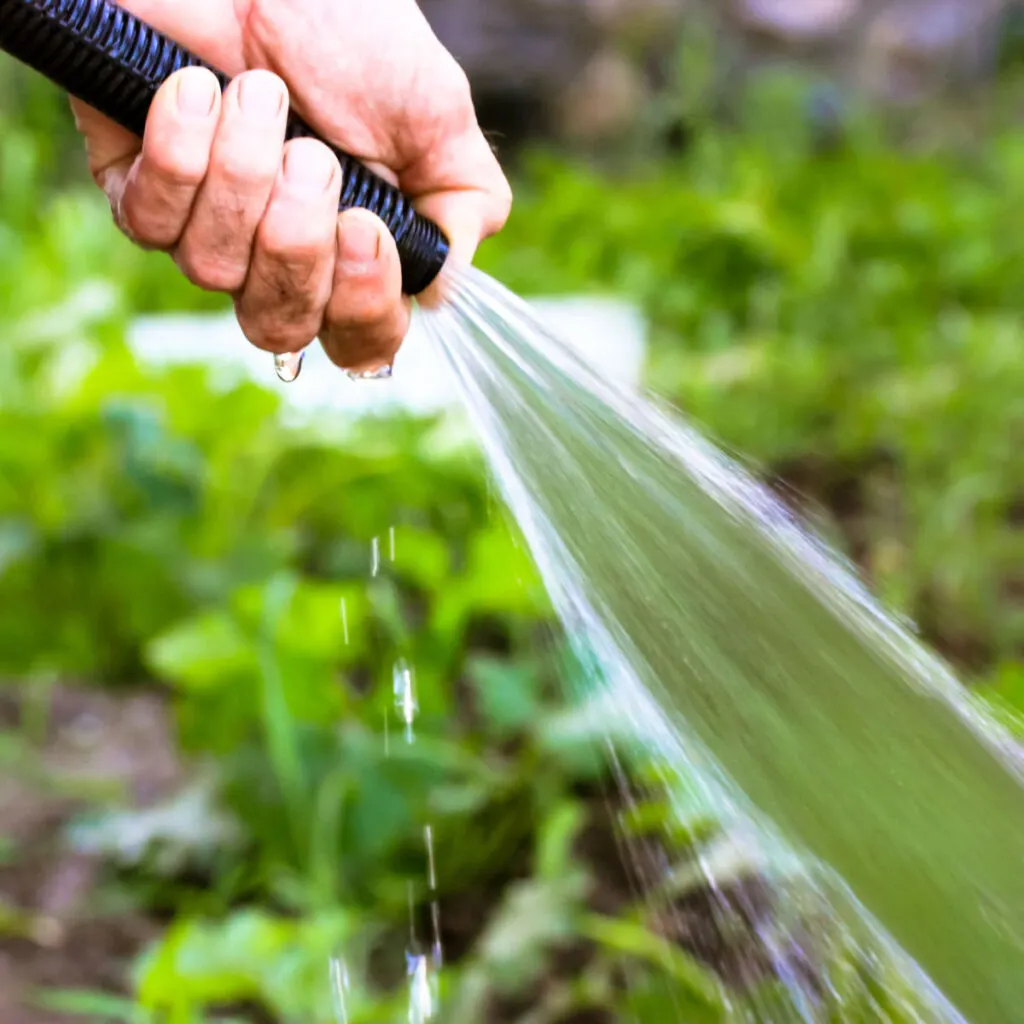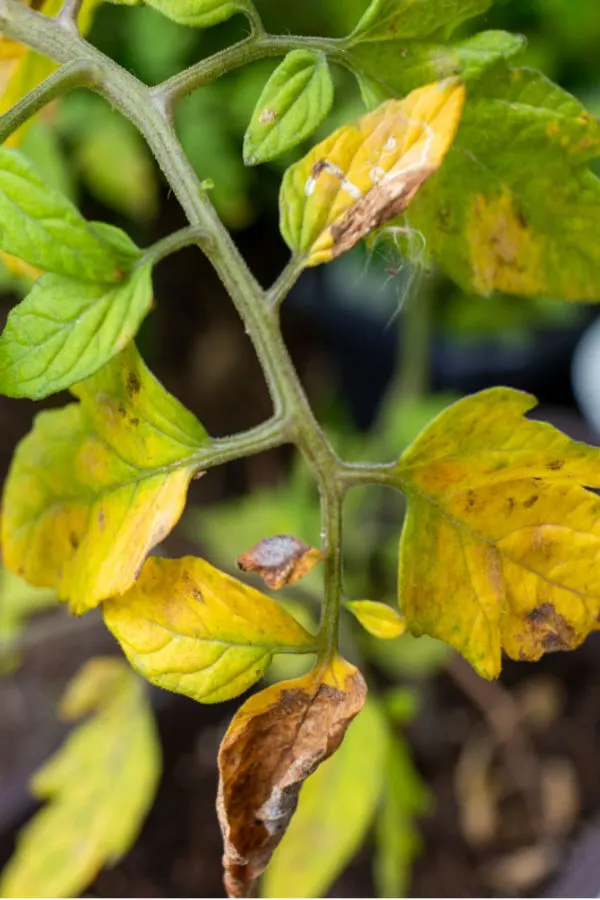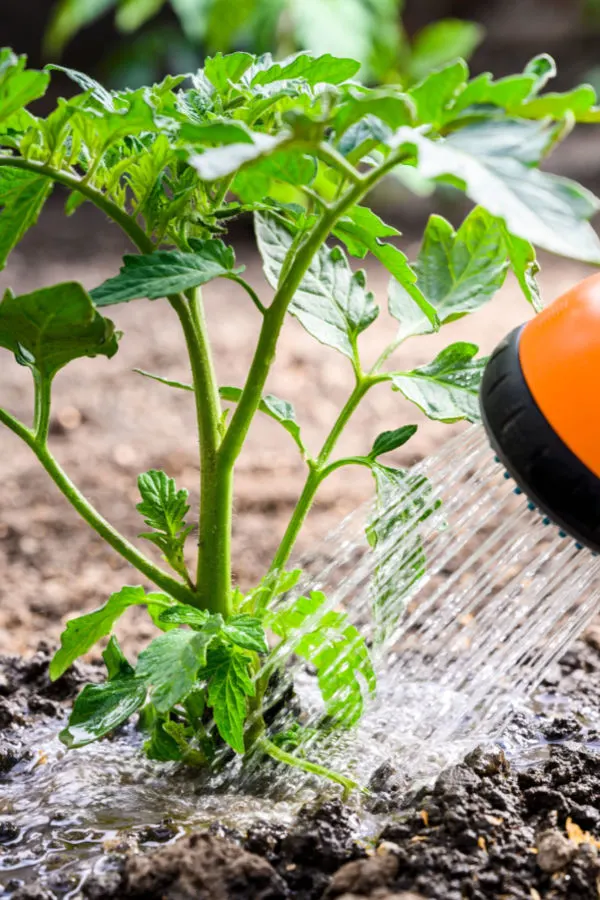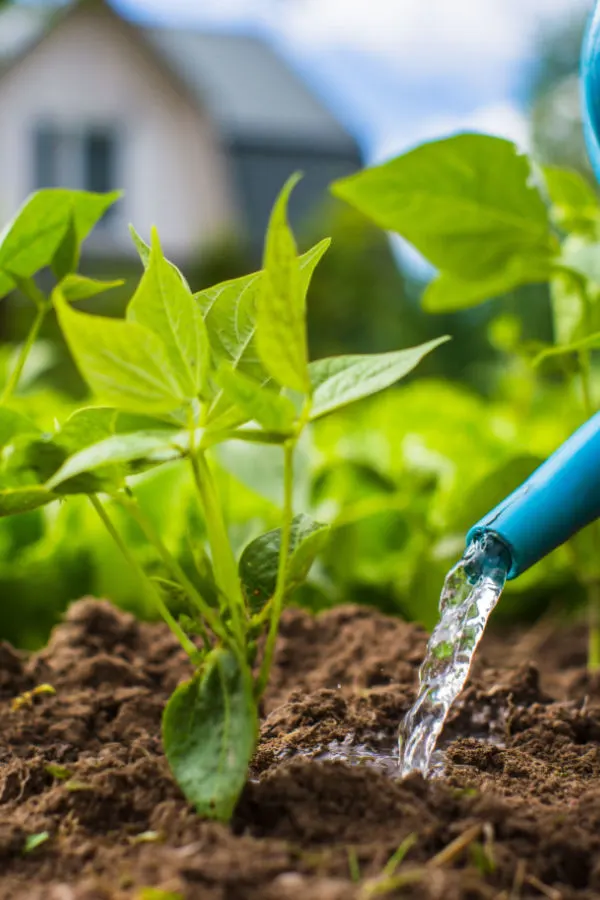When it comes to growing and maintaining a great vegetable garden – one of the best ways to ensure success is by watering your plants for success – and that means avoiding three of the biggest and most common garden watering mistakes gardeners make when supplying their plants with moisture!
Watering the garden seems like such a trivial task. But believe it or not, proper watering truly can make the difference between the success or failure of your crops. One thing is for sure – how, when and how often you water has a huge impact on how your plants will perform.
Too much water can stunt the growth of vegetable plants and leave them starving for nutrients. In severe cases, it can even kill them. Too little water, and your plants will shrivel and struggle to grow. And again, if moisture levels are low enough, plants can perish as well.

Watering needs certainly vary based on location. Those who live in or near desert-like conditions will always need to water more than those living in more temperate climates. But no matter where you live, there are a few simple rules of watering that will make a big difference in your garden’s health and harvest.
With that in mind, here is a look at 3 of the biggest and most common watering mistakes made when watering the garden, and more importantly, how to avoid them to help keep your plants strong and productive!
The 3 Biggest Garden Watering Mistakes – And How To Avoid Them!
#1 Watering Too Often
Believe it or not, more damage is done to plants by having too much water rather than too little. Watering plants every day, or even every other day all through the garden season will cause big issues for a plant’s long-term health.
Plants that receive excessive watering sessions fail to develop deep roots. Their roots stay near the surface because of the constant supply of water. Unfortunately, a shallow root system creates a weak and feeble plant.
Without driving their roots deep in the soil, plants are unable to find the minerals and nutrients they need to survive and thrive. The result is a plant that produces less, and is extremely vulnerable to wind and storms. Even worse, they can dry out quickly and be harmed by even the shortest of dry spells.

Too much water also saturates the root area. When roots become overly wet, they are unable to soak up nutrients, and oddly enough, water as well. When this occurs, the tell tale sign is a yellowing of leaves and slow or stunted growing patterns. Sadly, thinking their plants must need water, many gardeners water more.
Don’t Rely On The Look Of The Soil’s Surface
It’s important to not rely on the surface of your garden’s soil to see if plants need water. Instead, use a skewer or small stick to check down deep near the roots to see if there is moisture.
If it comes up dry, it’s time to water. On the other hand, if dirt is sticking to it, you can hold off. The best way to have an exact moisture level reading is with an inexpensive soil probe meter. They make fast and accurate readings to let you know if it’s time to water. Product Affiliate Link: Soil Moisture Meter
Water Slow & Deep – The 3 Biggest Garden Watering Mistakes
Once a plant has become established after transplanting (usually within a week to ten days), they only require deep watering every three to five days. And that is only if you haven’t had rain to do the job.
Only water new transplants daily or every other day for the first week or two until their roots have adjusted to the soil. Then allow them to adjust to the longer watering cycle to develop all-important deep roots.
Plants that establish deep root systems absorb more water and nutrients. That creates healthy plants that are less vulnerable to extreme weather conditions. And when it comes to watering the garden, ultimately, plants with deep roots will require less watering in the future.

Nearly all vegetable plants should get around an inch to an inch and a half of water per week. That amounts to about a quarter to a half gallon of water around the root zones twice a week. This is especially important for crops like tomatoes and cucumbers that require a lot of water to produce a good crop.
Gentle, slow watering of the root zone areas are best. It allows plants to soak in the moisture through the roots without run-off. It’s important not to dump an entire half gallon on a plant all at once. Water slow and allow it to soak in.
#2 Watering During The Heat Of The Day – The 3 Biggest Garden Watering Mistakes
That leads us to the second most common mistake made when watering the garden – watering at the wrong time. If at all possible, never water during the middle of the day when the sun is shining bright and hot.
Plants are at their maximum stress level in the middle of the afternoon. Watering during this time actually piles on the stress level as opposed to helping relieve it. For starters, watering in the afternoon can easily burn and scorch the foliage and blooms of plants.
Water droplets that land on leaves are heated up by the sun, causing damage and more stress. In addition, the heat and sunlight evaporate the water quickly. That means your watering efforts are far less effective – and the critical root zones of your plants end up receiving less water down deep.
The best time to water a garden is in the early morning. Not only is the sun low, but the temperatures are cooler as well. Early morning watering also allows the plants to soak up water more easily and prepare for the heat of the day ahead.

If early morning is not an option, early evening is the second best choice. One issue to be aware of with late-evening watering is plants become more susceptible to mold and mildew if the foliage stays wet for long periods.
If temperatures are cool, or there has been heavy humidity and dew, avoid watering in the evening. It will keep plants wet all night long and into the morning, which is exactly how mildew and mold take hold.
#3 Watering From Above – The 3 Biggest Garden Watering Mistakes
One of the deadliest weapons of all to a garden is a big garden hose with a powerful sprayer nozzle attached to its end. Watering your plants from above is a recipe for disaster, especially when it comes with a fast and strong stream of water.
The best way to water vegetable plants is low and slow. As in low to the ground and below the plant’s leaf canopy. As noted earlier in the article, it also needs to be applied slowly so that the water can soak deeper into the soil below.
Why is watering from above so bad? For starters, spraying a hose down onto your plants is an easy way to knock off blooms and future fruit and vegetables.

The blooms of vegetable plants are not strong. They are easily knocked off of plants from a strong stream of water. And once a bloom falls off, its ability to produce is gone. In addition, when the water stream is too strong, it can break tender stems, shoots and even branches off as well.
More Reasons Not To Water From Above – The 3 Biggest Garden Watering Mistakes
But more than anything else, watering plants from above with a spray nozzle puts the foliage of plants at risk. It can easily scald the plants if the sun is shining. It can also splash up spores from the soil that can quickly infect plants.
One of the most notable examples of this is tomato blight, whose spores can easily splash from the soil below onto a plant’s leaves from a hard stream of water. See: How To Stop Tomato Blight – 3 Simple Secrets To Keep Your Plants Safe!
If all of that wasn’t enough to not water from above – you also lose a large amount of an aerial water spray to evaporation. For best results, always water low and slow. Either by hand or with soaker hoses. The less the water hits your leaves – the better!
Here is to avoiding the 3 biggest garden watering mistakes, and to keeping your vegetable plants hydrated this year to perfection!
Follow Our Facebook Page For Great Gardening Tips And Advice! This Is My Garden Facebook Page
This Is My Garden is a garden website created by gardeners, for gardeners. Jim and Mary Competti have been writing gardening, DIY and recipe articles and books and speaking for over 15 years from their 46 acre Ohio farm. They publish three articles every week, 52 weeks a year. Sign up today to follow via email, or follow along!
